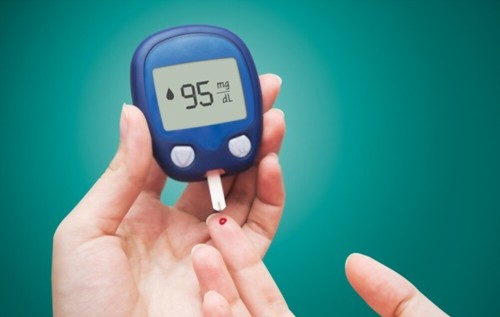Diabetes is now a global crisis, with approximately 422 million people diagnosed worldwide, and that figure is expected to escalate to over 642 million by 2040. The figure has been steadily increasing over the past few decades, and 1.6 million deaths per year are attributed directly to diabetes.
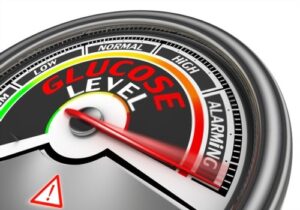
People with diabetes are at risk of premature death or developing serious health issues, including heart disease, reduction of vision or blindness, stroke, kidney failure, hearing impairment, and amputation of the lower extremities. Diabetes 2 also increases the risk of developing dementia. China currently has the largest percentage of diabetes, closely followed by India.
Although diabetes is not curable, it can be treated and controlled by managing blood sugar levels, and possibly go into remission. However Type 2 diabetes (previously known as non-insulin-dependent diabetes mellitus or adult-onset diabetes) may be preventable. 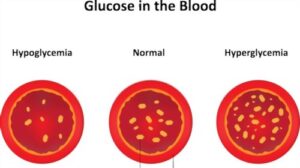 Type 1 diabetes, formally known as insulin-dependent diabetes mellitus or juvenile-onset diabetes, is an auto-immune disease and accounts for just 5-10% of diabetes sufferers. Both conditions are hereditary, although they may not necessarily develop.
Type 1 diabetes, formally known as insulin-dependent diabetes mellitus or juvenile-onset diabetes, is an auto-immune disease and accounts for just 5-10% of diabetes sufferers. Both conditions are hereditary, although they may not necessarily develop.
Diabetes affects the way that the body regulates glucose, or blood sugar, which is the body’s fuel or energy. So we know that both conditions are instigated by insulin, but what is it? Insulin is a hormone which is produced by the pancreas. When carbohydrates enter the body in the food, they are broken down into glucose and transported through the blood. Insulin can be best described as the key-holder that allows the glucose to enter the cells to provide energy.
With Type 1 diabetes, the immune system mistakenly recognises the insulin-producing beta cells in the pancreas as foreign invaders, and attacks and destroys them, after which the body is unable to produce its own insulin. It is not clear what initiates this, but the disease escalates quickly, usually occurring over a few weeks. It usually occurs in childhood or adolescence, although it is possible to develop at a later age. An interesting fact is that the prevalence of type 1 diabetes decreases the nearer you are to the equator.
In Type 2 the cells do not respond correctly to insulin which is known as insulin resistance, and to compensate the pancreas produces more insulin, increasing blood sugar levels. As the disease becomes more advanced, the body may not produce enough insulin. 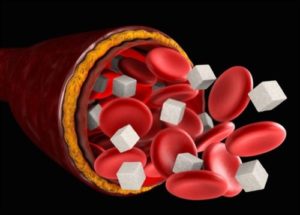 Without insulin the cells are unable to utilise the glucose which results in high blood sugar levels. It is not known why some people become insulin resistant, but an unhealthy sedentary and inactive life-style, being overweight, and possible over-consumption of highly processed carbohydrates and meats, sugary drinks, and saturated and trans fats is presumed to be a key factor.
Without insulin the cells are unable to utilise the glucose which results in high blood sugar levels. It is not known why some people become insulin resistant, but an unhealthy sedentary and inactive life-style, being overweight, and possible over-consumption of highly processed carbohydrates and meats, sugary drinks, and saturated and trans fats is presumed to be a key factor.
Obesity rates around the globe are increasing and so is diabetes type 2. However, an otherwise fit and healthy person can also develop type2 diabetes too, if the genes are present. This type of diabetes generally develops slowly, and the diagnosis rate increases with age, however there has been in an increased diagnosis over recent years in obese children.
Women with polycystic ovary syndrome or who suffered from gestational diabetes (temporary insulin resistance during pregnancy) are at a higher risk to develop type 2 diabetes, as are those of certain ancestral race or ethnicity
Symptoms of diabetes include the frequent need for urination, unquenchable thirst, feeling hungry most of the time, extreme fatigue, blurry vision, numbness or tingling in the hands or feet, and having cuts, sores or bruises which don’t heal well. This may also be accompanied by irritability, mood changes and sudden unintentional weight loss.
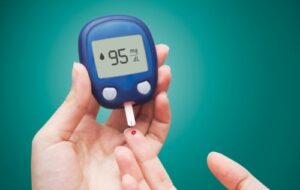 The three most common indicators of diabetes are known as the three P’s – polydipsia: an increase in thirst; polyuria: frequent urination; polyphagia: a rise in appetite. A blood test, known as A1C, or glycated hemoglobin test, which determines the average blood glucose level for the past two to three months, is used to check for diabetes. The higher the levels of blood sugar have been over the past months, the higher the A1C percentage will be – 6.5% or higher indicates diabetes.
The three most common indicators of diabetes are known as the three P’s – polydipsia: an increase in thirst; polyuria: frequent urination; polyphagia: a rise in appetite. A blood test, known as A1C, or glycated hemoglobin test, which determines the average blood glucose level for the past two to three months, is used to check for diabetes. The higher the levels of blood sugar have been over the past months, the higher the A1C percentage will be – 6.5% or higher indicates diabetes.
Type 1 diabetes will be treated with insulin injections, whereas diabetes 2 will be treated with diet and exercise, plus some oral medications if required, or even insulin injections, depending on the severity. Frequent home blood sugar testing is required for both diseases as it is imperative to test that the blood sugar levels are being kept constant. There is also a precursor of diabetes 2, known as prediabetes, which means elevated blood sugar levels, but if treated correctly it can be reversed before developing further.
Natural oils and herbs might offer a natural solution for diabetics, primarily due to the presence of flavonoids, naturally occurring polyphenolic compounds. 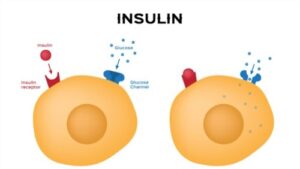 Several studies have shown that flavonoids were associated with positive effects in diabetic patients – reducing stress related tissue damage and preserving beta cell function, thus protecting against the progression of insulin resistance.
Several studies have shown that flavonoids were associated with positive effects in diabetic patients – reducing stress related tissue damage and preserving beta cell function, thus protecting against the progression of insulin resistance.
Just a teaspoon a day of black seed oil can add protection and treat symptoms, and there are some herbal teas available that can assist as a healthy refreshing beverage whilst imparting further benefits:
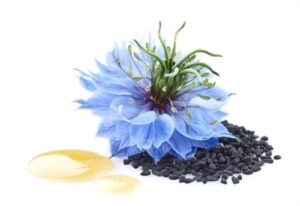 Black Seed Oil
Black Seed Oil
Black seed oil has huge potential for diabetes. An article published in the Journal of Endocrinology and Metabolism regarding research from the Indian Council of Medical Research affirmed that black seed oil “causes gradual partial regeneration of pancreatic beta-cells, increases the lowered serum insulin concentrations and decreases the elevated serum glucose”, which is truly astounding as it indicates that a natural oil may be able to treat and prevent both type 1 and type 2 diabetes. Furthermore the study concluded that black seed oil “improves glucose tolerance as efficiently as” the most widely used pharmaceutical product prescribed for diabetics, “yet it has not shown significant adverse effects and has very low toxicity.” which is fantastic since the particular product it is compared to has a range of side-effects including nausea, vomiting and diarrhea.
The British Journal of Pharmaceutical Research, also concluded that black seed could reduce glucose absorption, lower blood sugar levels and potentially stop the development of type-1 diabetes – a 2016 overview concluded that black seed could be significant for treating diabetes complications including nephropathy (kidney disease), neuropathy (nerve damage), and atherosclerosis (narrowing of the arteries), and confirmed black seed’s ability to enhance insulin production, glucose tolerance, and beta cell proliferation. Aside of this, there have been many studies regarding the use of black seed oil for diabetes:
A 2013 animal study confirmed that black seed elevated insulin levels; a 2014 animal study affirmed that black seed reduced blood glucose, plus food and water intake, and researchers concluded that black seed oil could be useful for treating high blood sugar and associated symptoms; a 2017 study confirmed that black seed could reduce HbA1c (the average blood glucose levels) by increasing insulin production, decreasing insulin resistance, decreasing intestinal insulin absorption and stimulating cellular activity.
A large analysis of thousands of people came to the conclusion that black seed can provide complimentary long term benefits for people with diabetes 2 by keeping glucose levels in check and reducing HbA1c.
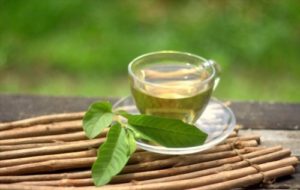 Guava Leaf Tea
Guava Leaf Tea
Regularly drinking guava leaf tea with every meal will help pre-diabetic and diabetic patients. Japan conducted several clinical trials that support the anti-diabetic properties, and it is now a government-approved food to help with the prevention and treatment of diabetes, after these trials revealed that compounds within the tea reduce the alpha- glucosidase enzyme activity, and also regulate the absorption of carbohydrates from food, controlling blood sugar levels after eating for patients suffering from Type 2 diabetes. Furthermore it has not been shown to interact negatively with diabetes medication already being taken. Guava tea effectively reduces blood glucose levels without increasing insulin production.
 Marmaraya Tea
Marmaraya Tea
A traditional remedy against diabetes, marmaraya helps to lower and normalise blood glucose levels, acting similar to insulin. Studies have found it to exhibit the same effect as the most popular pharmaceutical product prescribed to diabetics, a known inhibitor of gluconeogenesis, but without the side effects. A great aid for those already suffering from diabetes and for those on the threshold of the disease.
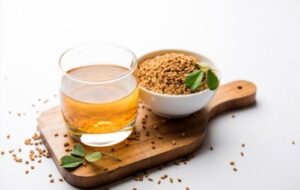 Fenugreek Tea
Fenugreek Tea
Fenugreek is a traditional remedy for diabetes, and studies have upheld this belief, showing that it can help in addressing insulin resistance and regulating blood sugar levels for both type 1 and type 2 diabetes. Even for non-diabetics it can have a positive effect on insulin sensitivity, improving glucose tolerance. A warm cup of low calorie, sugar-free fenugreek tea is an excellent choice for diabetics.

